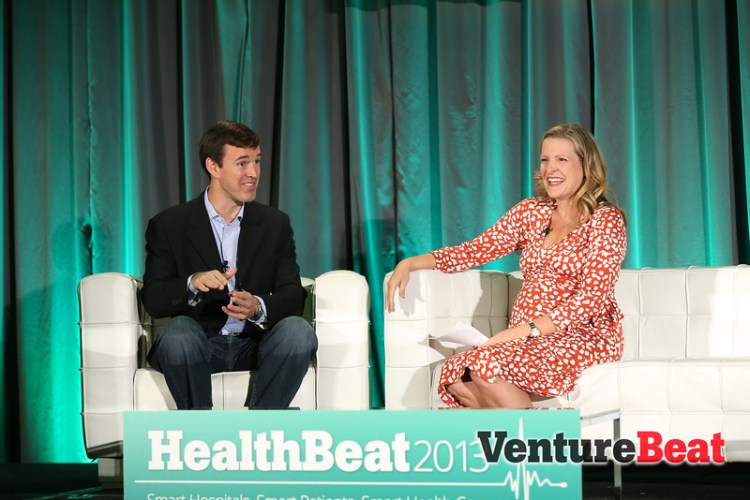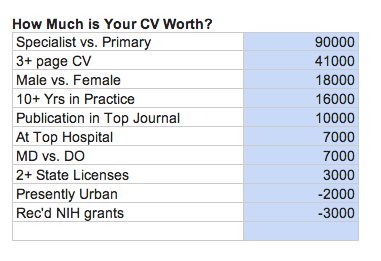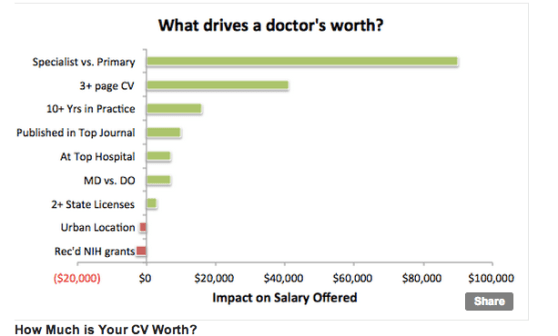The press often refers to Doximity as a “Facebook or LinkedIn for medical professionals,” but the company has far more to offer than social networking.
In fact, this small health care startup may have some lessons to pass on to the big boys.
Mountain View, Calif. based Doximity has built up an impressive base of some 220,000 physicians since it launched in 2011. Specialists and general practitioners rapidly adopted the HIPAA-compliant service over LinkedIn, as it is far more secure than a traditional social network. Doctors use Doximity on their mobile devices and desktops to exchange secure messages about patients, send digital faxes, peruse profiles of specialists and general practitioners, stay in touch with friends from medical school, and even gain accreditation for their medical education.
With doctors frequently checking in to Doximity, it’s the perfect breeding ground for recruiters. Rather than charging for private messaging, the company has been quietly building out a more sophisticated recruiting tool, with support of some of the largest hospital networks. The first groups to test the service include Cedars-Sinai, Ohio State University, Kaiser Permanente, One Medical Group, Allina Health, and Banner Health.
How recruiters are using Talent Finder
Doximity’s new service, dubbed Talent Finder, is the recruiting tool that LinkedIn should have built. It’s designed to encourage depth not breadth — recruiters aren’t spamming potential candidates and hoping someone responds. In its first months, Doximity has found that about 26 percent of doctors are interested in the opportunity, and less than one percent have opted out from receiving job opportunities on the platform.
The key difference from LinkedIn is that recruiters are forced to include a salary range and provide ample information about the opportunity at the outset. They are also encouraged to read about the doctor’s interests, education, and future goals.
“Doctors aren’t joining LinkedIn or other professional networking sites, as they don’t want to be spammed from pharma reps or patients asking them questions,” said Jeff Tangney, Doximity’s chief executive in an interview.
This saves time for the doctor — a city-slicker wouldn’t need to sit on a call for half an hour to discover that the perfect-sounding job is actually based in Abilene, TX.
Another benefit over competing services: Doctors can augment their relationships with other professionals. They can forward the most promising opportunities to a friend or colleague in a few clicks with the “Forward to a Colleague” feature.
How can doctors maximize their earning potential?
Doximity is also putting its developer and data science teams to work to analyze all this available data. Recruiters have already shared an estimated 70,000 job opportunities. This information will benefit doctors in the near-term — they can tweak their profile or resume to maximize their earning potential.
Tangney walked me through some of the key findings (and shared some data — see Fig. 1 and 2) during a visit to the VentureBeat offices.
He learned that doctors who live in rural areas are paid significantly more (it’s the law of supply and demand — most doctors want to be in San Francisco, Boston or New York), and specialists earn an average of $90,000 more than generalists. In part, that’s because specialists are more likely to charge patients for expensive procedures and tests.
For doctors who are keen to up their pay grade, a multi-page bibliography of research, lectures, and awards adds “heft,” says Tangney. We’re often told that resumes should be limited to a single page, but doctors with longer resumes (at least three pages) are more in demand.
To Tangney’s surprise, the data shows that doctors who speak a second language are typically offered a lower salary than English-only speakers — he expects that might be due to a bias against foreign medical graduates.
Doctors can use Talent Finder to make more money — but it’s also a huge potential revenue driver for Doximity.
Rumors are beginning to circulate in the medical community about a physician shortage, with doctors ill-equipped to care for the growing aging population. This will lead to a more competitive hiring environment and a far greater demand for physicians than ever before.
Doximity charges hospitals or physician recruiters a subscription fee of $12,000 per year per license or “seat” to be able to post their jobs. The average client has about 2 or 3 licenses to Doximity.
Doximity has raised just shy of $30 million in funding from Emergence Capital Partners, Morgenthaler Ventures (which now goes by Canvas), and InterWest Ventures.
VentureBeat's mission is to be a digital town square for technical decision-makers to gain knowledge about transformative enterprise technology and transact. Learn More



